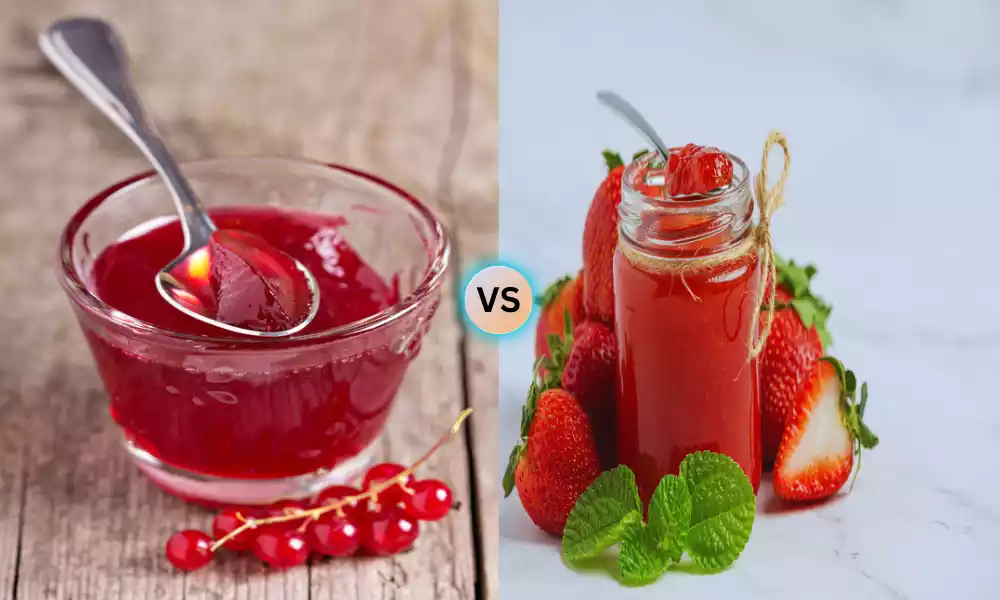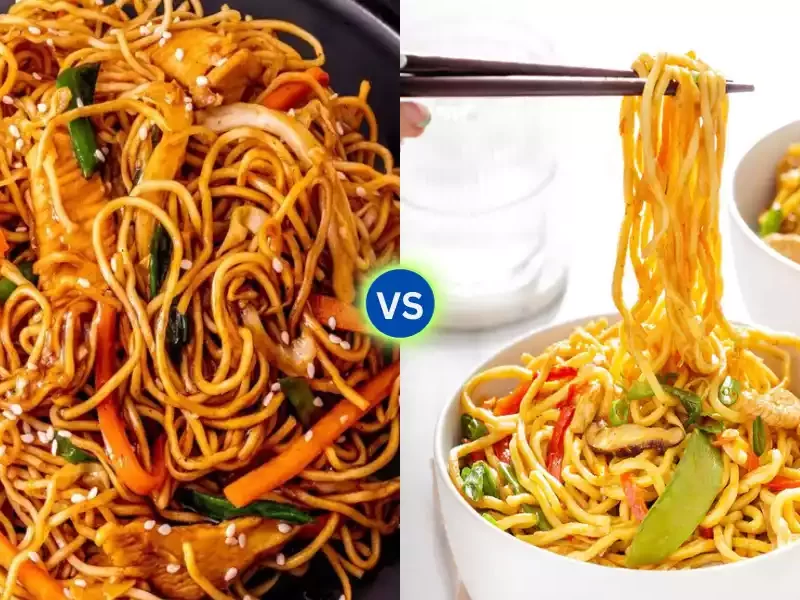Jelly and Jam are popular fruit-based spreads that add flavor to our daily meals. Though they share similarities, each possessing distinct features which set them apart. Jelly is a clear and smooth spread made from fruit juice, sugar, and pectin, offering a delightful clarity of flavor. In contrast, jam is a thicker, fruitier concoction, containing crushed or pureed fruit along with sugar.
Understanding the differences between these two spreads is essential for choosing the right one for your culinary creations and breakfast preferences. We will delve deeper into the composition, taste, uses, and regional variations of jelly and jam to help you make an informed choice between these delectable toppings.
What is Jelly?
Jelly is a type of fruit spread made primarily from fruit juice, sugar, and pectin. Pectin is a natural thickening agent found in fruits, and it is essential for giving jelly its characteristic clear and smooth texture. To make jelly, fruit juice is typically extracted, strained to remove solids, and then mixed with sugar and pectin. The mixture is heated, which causes it to thicken and set into a gel-like consistency as it cools.
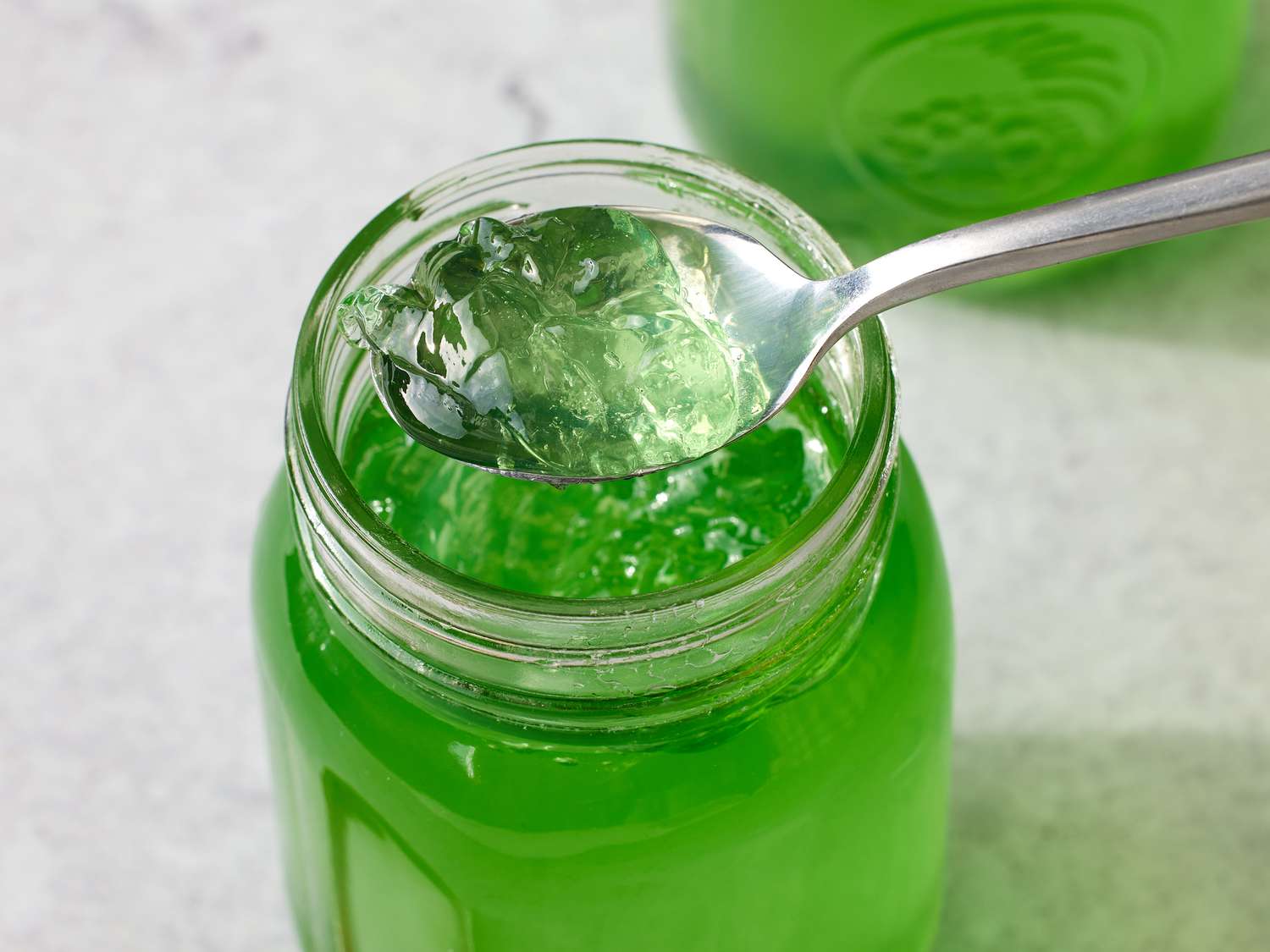
Jelly is known for its clear appearance and the fact that it lacks the fruit pulp or chunks that are often found in other fruit spreads like jam. It is commonly used as a topping for bread, toast, or pastries and is known for its vibrant fruit flavor and smooth texture.
How Jelly is Made
Jelly is made through a relatively simple cooking process that involves fruit juice, sugar, and pectin, which acts as a natural thickening agent. Here are the general steps to make jelly:
Ingredients:
- Fruit Juice: Choose ripe fruits, such as berries, grapes, apples, or citrus fruits, and extract their juice. You can use a juicer, blender, or manual fruit squeezing method.
- Sugar: Sugar is a crucial ingredient for preserving the jelly, enhancing flavor, and providing sweetness. The amount of sugar used can vary depending on the fruit and recipe but is typically around 1 to 2 cups of sugar for every cup of fruit juice.
- Pectin (optional): Pectin is added to help the jelly set and achieve its characteristic gel-like consistency. Some fruits naturally contain enough pectin, while others require the addition of commercial pectin.
Equipment:
- Large pot: To cook the mixture.
- Wooden spatula or spoon: For mixing ingredients.
- Canning jars and lids: For storage.
Instructions:
- Prepare the Fruit Juice: Extract the fruit juice by pressing or blending the fruit. Strain the juice to remove any seeds, pulp, or solids, ensuring that you have a clear liquid.
- Combine Ingredients: In a large pot, combine the fruit juice and sugar. Mix well until all of the sugar has completely dissolving. If using commercial pectin, follow the package instructions for when to add it.
- Cook the Mixture: Heat the mixture over medium-high heat, stirring constantly to prevent burning. Bring it to a boil.
- Skim Foam (if necessary): As the mixture boils, foam may rise to the surface. Skim off this foam with a spoon or use a defoaming agent to reduce foam formation.
- Test for Setting: To determine if the jelly has reached the desired consistency, you can perform a “wrinkle test.” Place a small amount of the mixture on a chilled plate and let it cool for a minute. Run your finger through it, and if it wrinkles and holds its shape, the jelly is ready.
- Fill Jars: While the jelly is still hot, carefully pour it into sterilized canning jars, leaving some headspace at the top. Seal the jars with lids and rings while they are still hot.
- Cool and Store: Allow the jars to reach room temperature before proceeding with further preparations. As they cool, a vacuum seal will form, preserving the jelly. Once cool, store the jars in a cool, dark place, such as a pantry.
- Enjoy: Your homemade jelly is now ready to be enjoyed as a spread or used in various recipes.
The exact cooking times and proportions may vary depending on the fruit and recipe, so be sure to follow a specific jelly recipe for the best results.
What is Jam?
Jam is a fruit spread made from crushed or pureed fruit, sugar, and sometimes pectin. Unlike jelly, which has a smooth and clear texture, jam typically retains the natural fruit pulp and small fruit chunks, giving it a thicker and chunkier consistency. To make jam, fresh fruits are usually mashed or pureed, mixed with sugar, and then cooked together. The cooking process helps the mixture thicken and develop a spreadable texture.
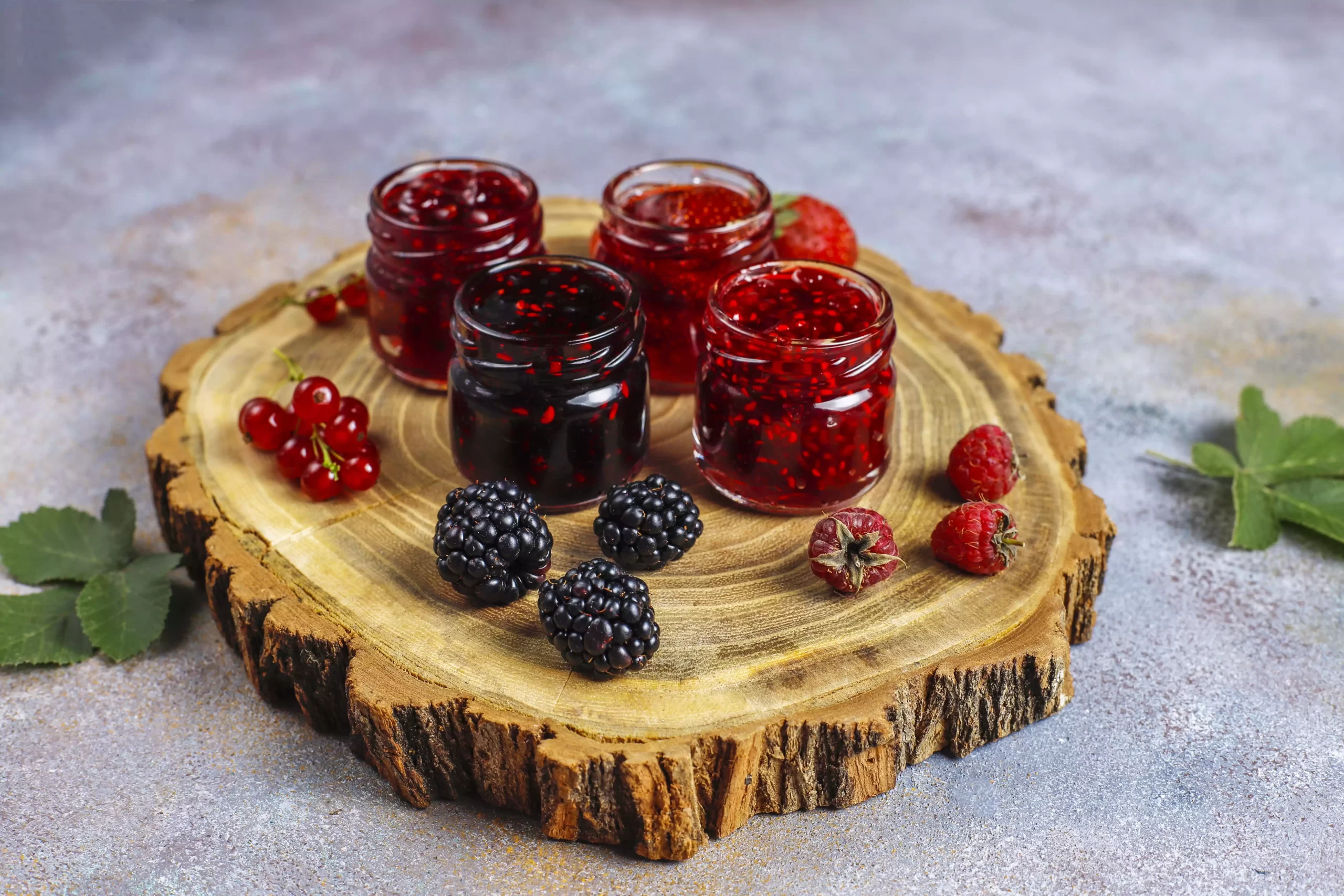
Pectin may be added to some jam recipes to aid in thickening, especially when the fruit being used has lower natural pectin content. Jam is known for its rich and intense fruit flavor, often with visible fruit pieces, making it a favorite topping for bread, biscuits, scones, and pastries. It is also a versatile ingredient in baking, cooking, and dessert recipes.
How Jam is Made
Making jam involves a relatively straightforward process that combines crushed or pureed fruit with sugar and, optionally, pectin to create a thick, flavorful spread. Here’s a general outline of how jam is made:
Ingredients:
- Fresh Fruit: Choose ripe and preferably slightly overripe fruits, such as berries, peaches, apricots, plums, or figs.
- Sugar: Sugar is used for sweetness, preservation, and to help the jam set. The amount of sugar varies based on the fruit and recipe but typically ranges from 1 to 2 cups of sugar for every cup of crushed or pureed fruit.
- Pectin (optional): Pectin is a natural thickening agent found in many fruits, but some fruits may require the addition of commercial pectin to achieve the desired consistency.
Equipment:
- Large pot: For cooking the jam.
- Wooden spatula or spoon: For mixing ingredients.
- Canning jars and lids: For storing the jam.
Instructions:
- Prepare the Fruit: Wash, peel (if necessary), and remove any pits or seeds from the fruit. Cut it into smaller pieces or crush it, depending on the desired texture of your jam. You can use a food processor, blender, or a potato masher to crush the fruit.
- Combine Ingredients: In a large pot, combine the crushed or pureed fruit and sugar. Stir together until all the sugar has completely dissipated. If using commercial pectin, follow the package instructions for when to add it.
- Cook the Mixture: Heat the fruit and sugar mixture over medium-high heat, stirring constantly to prevent sticking or burning. Bring it to a boil.
- Skim Foam (if necessary): As the mixture boils, foam may rise to the surface. Skim off this foam with a spoon or use a defoaming agent to reduce foam formation.
- Test for Setting: To determine if the jam has reached the desired consistency, you can perform a “wrinkle test.” Place a small amount of the mixture on a chilled plate and let it cool for a minute. Run your finger through it, and if it wrinkles and holds its shape, the jam is ready.
- Fill Jars: While the jam is still hot, carefully pour it into sterilized canning jars, leaving some headspace at the top. Seal the jars with lids and rings while they are still hot.
- Cool and Store: Let the jars cool to room temperatures before moving them. As they cool, a vacuum seal will form, preserving the jam. Once cool, store the jars in a cool, dark place, such as a pantry.
- Enjoy: Your homemade jam is now ready to be enjoyed on toast, as a pastry filling, in desserts, or as a condiment for various dishes.
Remember that specific recipes may vary depending on the type of fruit and personal preferences, so it’s a good idea to follow a jam recipe that corresponds to the fruit you’re using for the best results.
Comparison Table of Jelly and Jam
Here’s a comparison table highlighting the key differences between jelly and jam:
| Characteristic | Jelly | Jam |
|---|---|---|
| Texture | Clear and smooth | Thick and chunky |
| Ingredients | Fruit juice, sugar, pectin | Crushed or pureed fruit, sugar, pectin (optional) |
| Fruit Content | Minimal to no fruit chunks | Contains fruit pulp or small fruit chunks |
| Clarity of Flavor | Intensely clear fruit flavor | Rich and intense fruit flavor |
| Use Cases | Topping for bread, toast, pastries | Topping for bread, biscuits, scones, pastries, baking, cooking, and desserts |
| Pairings | Often paired with light, delicate foods | Versatile and pairs well with various foods |
| Nutritional Content | Typically lower in calories, sugar, and fiber | Slightly higher in calories, sugar, and fiber |
| Storage | Longer shelf life due to its clear texture | May have a shorter shelf life due to higher fruit content |
| Regional Variations | Varieties available worldwide, with regional specialties | Regional variations offer unique flavors and ingredients |
Keep in mind that these characteristics can vary depending on specific recipes and regional preferences, but this table provides a general overview of the main distinctions between jelly and jam.
Flavor Variations between jelly and jam
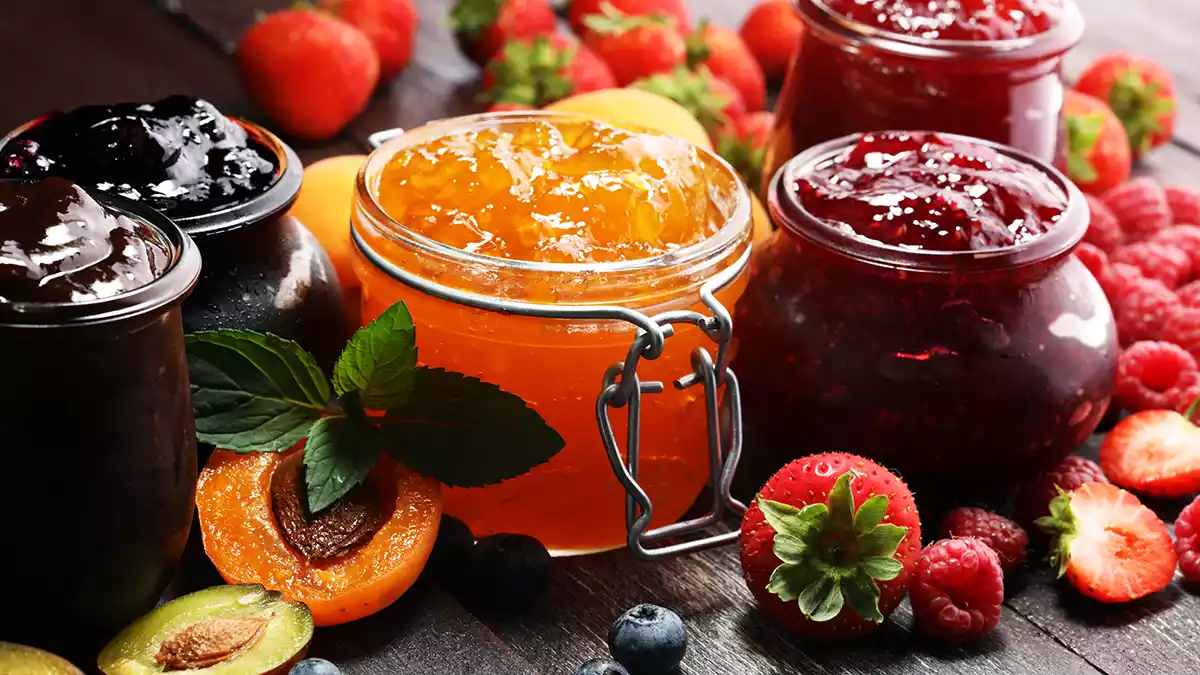
While both jelly and jam can offer a variety of flavor options, there are some distinct differences in the types of flavors commonly associated with each. Here’s a breakdown of flavor variations between jelly and jam:
Jelly Flavor Variations
- Fruit-Forward Flavors: Jelly tends to emphasize the pure, clear flavors of the fruit it’s made from. Common fruit-based jelly flavors include grape, apple, currant, and citrus (e.g., orange or lemon). These jellies often have a clean, intense fruit taste with a smooth texture.
- Mint Jelly: Mint jelly is a unique variation of jelly, known for its minty and herbal flavor. It’s often used as a condiment for savory dishes, particularly lamb.
- Hot Pepper Jelly: This spicy jelly is made with hot peppers like jalapeños or habaneros, resulting in a sweet and spicy combination. It’s versatile and pairs well with cheese and crackers.
Jam Flavor Variations
- Fruit Varieties: Jam comes in a wider array of fruit flavors and often retains more of the fruit’s natural texture and pulp. Popular jam flavors include strawberry, blueberry, raspberry, apricot, peach, cherry, and fig. These jams offer a more varied and chunky fruit experience.
- Tropical Flavors: Some jam varieties, such as pineapple, mango, and papaya, explore tropical fruit flavors, adding a hint of exotic sweetness.
- Spiced Jams: Jam recipes may include spices like cinnamon, cloves, or nutmeg, creating spiced variations that are especially popular during the fall and winter seasons.
- Herbal Jams: Unique jams infused with herbs like lavender, basil, or rosemary provide a distinctive twist on traditional fruit flavors.
While both jelly and jam offer fruit-based spreads, jelly tends to focus on clear and pure fruit flavors, while jam embraces a wider variety of fruit textures and often incorporates additional ingredients like spices and herbs. The choice between jelly and jam depends on your preference for fruit clarity and texture in your spreads.
Culinary Uses
Jelly and jam can be used in a variety of culinary applications, enhancing the flavor of dishes, desserts, and beverages. Here are some common culinary uses for both jelly and jam:
Culinary Uses for Jelly
- Toast and Breakfast Pastries: Jelly is a classic choice as a spread for toast, bagels, muffins, and croissants. Its smooth texture and vibrant fruit flavor make it a delightful breakfast topping.
- Peanut Butter and Jelly Sandwiches: The combination of peanut butter and jelly in a sandwich is a beloved classic, offering a perfect balance of sweet and nutty flavors.
- Dessert Fillings: Jelly can be used as a filling for cakes, cupcakes, and pastries. It adds sweetness and a burst of fruit flavor to desserts like jelly-filled doughnuts.
- Sauces and Glazes: Jelly can be used as a base for sweet and tangy sauces and glazes for meats, particularly in dishes like meatballs or cocktail sausages.
- Condiments: Jelly can serve as a condiment for various dishes, including cheese platters, charcuterie boards, and roasted meats, where it complements the savory elements.
- Baking: Jelly can be used as a filling for thumbprint cookies, tarts, or as a sweet layer in layered cakes.
Culinary Uses for Jam
- Toast and Biscuits: Just like jelly, jam is excellent as a spread for breakfast items like toast, biscuits, English muffins, and scones.
- Pancake and Waffle Toppings: Jam adds a burst of fruitiness when used as a topping for pancakes, waffles, and crepes.
- Dessert Fillings: Jam is commonly used as a filling for pies, tarts, turnovers, and pastries. It pairs especially well with buttery or flaky pastry crusts.
- Yogurt and Parfaits: Stirring jam into yogurt or layering it in parfaits adds sweetness and a fruity dimension to these dairy-based treats.
- Ice Cream Toppings: Jam can be drizzled over ice cream or used as a swirl in homemade ice cream for added flavor.
- Marinades and Glazes: Jam can be combined with various ingredients to create flavorful marinades and glazes for grilled meats, poultry, and seafood.
- Salad Dressings: Jam can be a key component in salad dressings, providing a sweet and tangy flavor profile to complement greens and other salad ingredients.
- Cheese Pairings: Jam pairs excellently with cheese and is often served alongside a cheese board or cheese platter. The sweet and savory contrast enhances the overall tasting experience.
- Cocktails and Mocktails: Jam can be used to sweeten and flavor cocktails, such as jam-infused syrups or muddled with fresh herbs and spirits. It can also be added to non-alcoholic drinks for a fruity twist.
Both jelly and jam offer versatility in the kitchen, allowing for creativity in sweet and savory dishes alike. The choice between the two depends on your desired texture and fruit content in your culinary creations.
Popular Brands
As of my last knowledge update in September 2021, there were several popular brands known for producing high-quality jelly and jam products. Keep in mind that the popularity of brands can vary by region, and new brands may have emerged since then.
Here are some well-known brands:
Jelly Brands:
- Smucker’s: Smucker’s is a renowned brand known for a wide range of fruit spreads, including jellies, jams, and preserves. They offer various flavors and fruit options.
- Welch’s: Welch’s is famous for its grape-based products, including grape jelly. They also produce a selection of other fruit spreads.
- Polaner: Polaner offers a variety of fruit spreads, including sugar-free options and fruit-based products with no high-fructose corn syrup.
- Bonne Maman: Bonne Maman is a premium French brand known for its high-quality fruit preserves and jams, often sold in distinctive glass jars.
- Stonewall Kitchen: Stonewall Kitchen produces a wide range of gourmet food products, including fruit preserves and spreads with unique flavors and ingredients.
Jam Brands:
- Bonne Maman: Bonne Maman has long been revered for their delicious preserves, which feature high-end ingredients. Their jams have also gained immense popularity.
- Trader Joe’s: Trader Joe’s offers a variety of affordable and flavorful fruit jams, often with creative flavor combinations.
- Hero: Hero is a Swiss brand known for its fruit jams and preserves, offering a selection of traditional and exotic fruit flavors.
- Tiptree: Tiptree is a British brand renowned for its premium jams, known for their use of high fruit content and traditional cooking methods.
- Crofter’s Organic: Crofter’s Organic specializes in organic fruit spreads and jams, focusing on natural ingredients and sustainability.
- Bonne Maman: Yes, Bonne Maman is mentioned again because it is widely recognized for both its preserves and jams, each having a devoted following.
These devices can be found at many stores, with prices dependent upon your geographical area. It’s a good idea to check with local grocery stores or online retailers for the most up-to-date selection of jelly and jam brands in your area. Additionally, new brands may have emerged in the market since my last update.
Which is better Homemade vs. Store-Bought
The choice between homemade and store-bought jelly or jam depends on your specific preferences, priorities, and circumstances. Neither option is inherently better than the other, it’s more about what aligns with your needs and tastes.
Here are some factors to consider:
Homemade Jelly or Jam May Be Better When:
-
- Customization Matters: If you have specific flavor preferences, dietary restrictions, or want to experiment with unique fruit combinations, homemade preserves allow you to tailor the recipe to your liking.
- Quality and Freshness Are Essential: Homemade spreads can often have a fresher taste because you can use high-quality, ripe fruit and control the ingredients. You can avoid preservatives and artificial additives, resulting in a more natural product.
- You Enjoy Cooking: Making jelly or jam from scratch can be a rewarding culinary experience. If you enjoy cooking and want to engage in the process, homemade may be the way to go.
- Health Considerations: If you have dietary concerns, such as needing lower sugar or sugar-free options, homemade allows you to control the ingredients to meet your specific health requirements.
- Cost Is a Factor: Homemade can be cost-effective, especially if you use seasonal fruit or have access to fresh produce. It can save you money compared to premium store-bought brands.
Store-Bought Jelly or Jam May Be Better When:
-
- Convenience Is Key: Store-bought options are convenient for busy lifestyles. They’re readily available, require no preparation, and can be purchased in a variety of flavors.
- Variety Matters: Commercial brands offer a wide range of flavors, including specialty and exotic varieties. If you enjoy exploring different flavors, store-bought offers more options.
- Long Shelf Life Is Needed: Store-bought preserves typically have longer shelf lives due to added preservatives and packaging, making them suitable for extended storage.
- Consistency Matters: If you prefer a consistent taste and texture each time you use a particular brand, store-bought products offer reliability.
- Time Savings Are Essential: If you’re short on time or looking for quick meal solutions, store-bought spreads are a time-saving option.
The “better” choice depends on your personal priorities. Many people find a balance between homemade and store-bought, using homemade when they have the time and inclination, and relying on store-bought for convenience and variety. It’s also worth noting that some individuals may prefer the taste of homemade, while others may have a strong preference for certain commercial brands. Experimenting with both options can help you determine which suits your needs and tastes best.
Fun Facts About Jelly and Jam
Jelly and jam have a rich history and interesting characteristics that make them fun to learn about. Here are some fun facts about jelly and jam:
- Ancient Preservation: The practice of preserving fruits in sugary substances dates back to ancient civilizations like the Egyptians and Romans. They used honey as a preservative.
- Etymology: The word “jelly” comes from the French word “gelée,” which means “frozen” or “congealed.” “Jam” has its origins in the Portuguese word “jamar,” meaning “to eat.”
- Royal Spread: Queen Elizabeth I of England is said to have enjoyed a sweet concoction similar to jam, made from quince fruit, which was often referred to as “quiddany.”
- American Favorites: In the United States, peanut butter and jelly sandwiches (often made with grape or strawberry jam) are a beloved and iconic lunchtime staple.
- Jam Bands: Several musical groups and bands have adopted “jam” in their names, such as “The Jam,” “Pearl Jam,” and “Phish.”
- Cultural Significance: In some cultures, jam-making is an essential part of tradition and community, often involving family gatherings and sharing recipes passed down through generations.
- Gelatinous Magic: Jelly gets its characteristic clear and smooth texture from pectin, a natural thickening agent found in fruit. It’s this pectin that gives jelly its unique consistency.
- Jam and the Beatles: In the famous Beatles song “Strawberry Fields Forever,” John Lennon mentions “strawberry jam,” which may be a metaphor for childhood memories.
- World Records: The world record for the largest serving of jelly and jam involved the creation of a massive 3,078.49-kilogram (6,785-pound) serving of strawberry jam in Australia in 2012.
- Jelly Beans: Jelly beans are small, bean-shaped candies that have a jelly-like center. They are often flavored with fruit flavors and come in various colors.
- National Days: In the United States, National Peanut Butter and Jelly Day is celebrated on April 2nd, highlighting the beloved combination of peanut butter and jam.
- Unique Jam Flavors: Some specialty jam flavors may surprise you, including bacon jam, tomato jam, and lavender jam, showing the versatility of this condiment.
- Presidential Connection: Thomas Jefferson, the third President of the United States, was known to have enjoyed a variety of fruit preserves, including fig jam and peach preserves.
- Health Benefits: Both jelly and jam can provide a source of fruit-based nutrients like vitamins, minerals, and antioxidants when made with real fruit.
- International Variations: Different countries have their own unique versions of fruit preserves. For instance, marmalade is a type of citrus-based jam, and chutney is a savory, spiced fruit preserve.
These fun facts showcase the cultural significance, historical relevance, and intriguing qualities of jelly and jam as popular food items enjoyed worldwide.
Final Opinion
Jelly and Jam are beloved fruit spreads that have made their mark in culinary history and culture. While jelly boasts a smooth, clear texture and intense fruit flavor, jam offers a chunkier, fruitier experience with its bits of fruit pulp or pieces. Both have their unique appeal, whether you prefer the pure clarity of jelly or the robustness of jam.
Whether enjoyed on morning toast, in desserts, as a savory condiment, or in creative culinary endeavors, these fruit spreads continue to delight taste buds and bring versatility to a wide range of dishes, preserving traditions and flavors through the ages.

